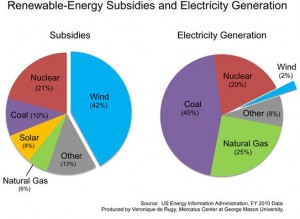The use of nuclear power to generate electricity is growing worldwide. More than 100 nuclear power plants are under construction or in various stages of planning, and many existing plants are expanding.
President Obama recently announced an $8.33 billion federal loan guarantee for the construction of a pair of nuclear reactors in Georgia. The president also said he wants to triple the amount of loans the federal government guarantees in order to jumpstart seven to 10 new nuclear power projects over the next decade. The guarantees should lower borrowing costs and make financing easier to obtain. However, until the government meets its legal obligation to provide storage for spent nuclear fuel and high-level radioactive waste, only a few new nuclear reactors are likely to be built. Fortunately, solutions are available if the government is willing to embrace them.
Politics and Nuclear Waste. The most problematic nuclear waste in the United States is spent fuel rods from nuclear reactors. The problem is largely a creation of the federal government. In the early 1970s, the now defunct Atomic Energy Commission tightened regulations on the nascent U.S. nuclear recycling industry, which increased costs and made recycling uneconomical. As a result, the sole recycling plant in the United States closed and construction on a second facility was halted. In 1977, due to fear of nuclear proliferation, President Jimmy Carter signed an executive order that officially banned nuclear fuel reprocessing.
With waste building up, Congress passed the 1982 Nuclear Waste Policy Act (amended in 1988) to ensure proper long-term storage. The act required the U.S. Department of Energy to develop and maintain an underground storage facility for nuclear waste:
- The site had to meet strict criteria, including the ability to safely contain 77,000 metric tons of material for up to 10,000 years.
- The material had to be accessible for 50 years in the event President Carter’s ban was reversed and a recycling program was allowed.
- To pay for storage, a tax was levied on the nuclear power industry.
After 26 years and more than $8 billion (collected from nuclear operators), the Energy Department determined that Yucca Mountain, Nevada, was a satisfactory storage place. However, despite scientific evidence that Yucca Mountain is safe, lawsuits and political wrangling have prevented use of the site as a storage facility. In fact, the Obama administration recently zeroed out spending on Yucca Mountain, announcing that the program would be terminated.
Read the full NCPA Brief Analysis, “Nuclear Power Development: Removing Roadblocks.”
